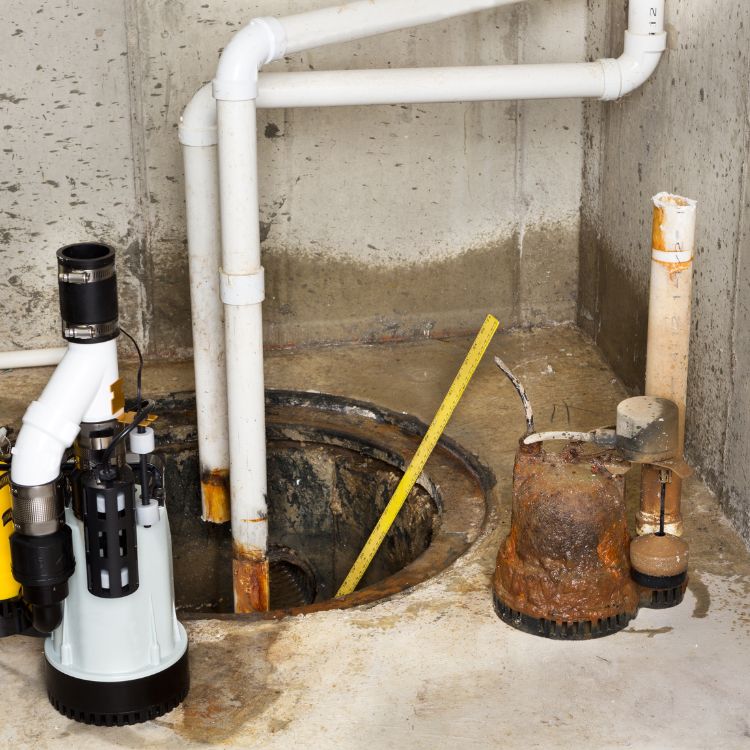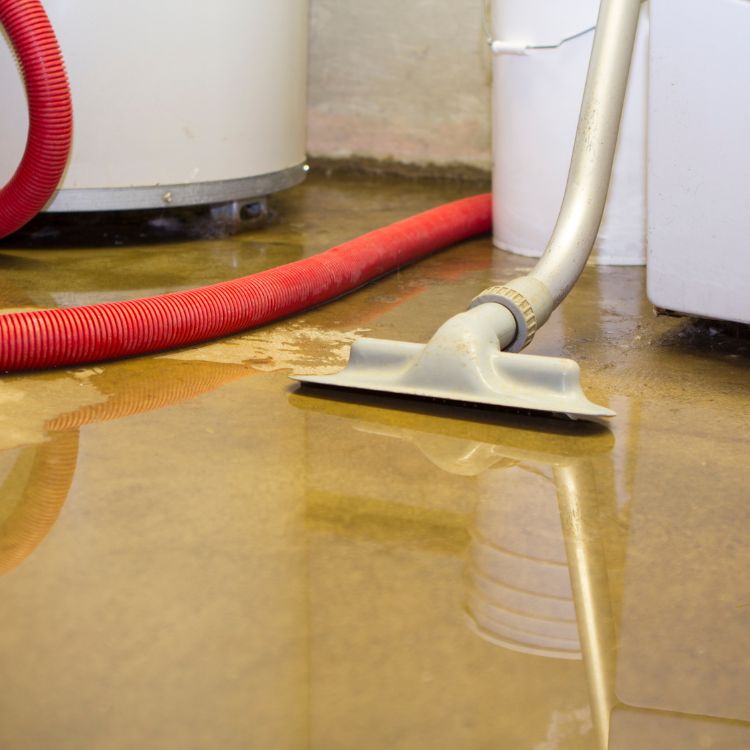The Complete Sump Pump Maintenance Checklist

If your home comes equipped with a sump pump, it can be very beneficial to know how to maintain it. After all, a sump pump that isn’t working can’t do its job.
And even though you can’t always prevent problems with your sump pump, there are things you can do to minimize the problems or at least catch them before it results in damage to your home.
How Sump Pumps Work
Before getting into the details of sump pump maintenance, it’s essential to understand how it works.
If your home has a sump pump, there will be a hole in the lowest part of your basement or crawl space which is where your sump pump is.
Anytime the ground around the sump pump becomes saturated with water, the hole will start to fill up. Once the water reaches a certain point, the pump will turn on and start pumping out the excess water before it can cause damage.
The water gets pumped into your home’s drainage system, designed to safely drain water away from your home.
Without a proper working sump pump, your basement is at risk of flooding, so it is essential to ensure your pump works correctly.

Do Sump Pumps Need Maintenance?
Like any other mechanical thing in your home, regular maintenance ensures a smooth-running sump pump. And even though you can’t completely prevent your sump pump from having problems, routine maintenance and checks can help you avoid damage to your home.
Sump Pump Maintenance Checklist
Now that you understand how a sump pump works, it’s time to discuss the different sump pump maintenance tasks you can do as a homeowner.
Check Your Sump Pump Regularly
You should inspect your sump pump at least once every few months. Here are some things to look out for when doing a routine check on your sump pump.
- Check if the sump pump makes loud noises. (You will need to wait until the pump is on.)
- Make sure the float is not stuck. (The float triggers the pump to turn on when the water levels get too high. So, if it is stuck, the sump pump won’t work.)
*Tip – If you know there is a big rainstorm coming, it can be a good idea to perform this check a few days in advance so you can fix any issues.
Clean The Sump Pit
Debris and sediment are two leading causes of problems with sump pumps. To prevent this from happening, it is a good idea to spend some time deep cleaning your sump pit.
You will first want to unplug your sump pump and remove it from the pit. Then, using warm water and a putty knife, scrape away any sediment that has built up on the pump. You can also use a sponge to wipe the pump down.
Next, you will want to clean out the pit. Make sure you remove all the debris and wipe away as much sediment buildup as possible.
Once the pit is clean, you can put the pump back into the hole and reconnect it to power.
Inspect Your Discharge Pipe For Blockages
The discharge pipe is the pipe your sump pump uses to move water away from your house. Blockages in this pipe can cause backups and overflows, so it is essential to ensure it is free of any blockages or clogs.
You can do this by checking the pipe and ensuring it is clear. If you find any blockages, remove them so the sump pump can do its job.
Make Sure The Pit Is Properly Covered
You should always keep your sump pit fully covered. Doing this will help keep debris out of the hole, which can impact the operation of your sump pump.
*Tip – Consider purchasing a sump pump cover or lid, as this will provide extra protection for the pit.

How Often Does A Sump Pump Need To Be Cleaned?
You can clean your sump pump as often as you’d like or as often as it needs it. However, once a year is a good rule of thumb to follow.
How Long Do Sump Pumps Last On Average?
The lifespan of a sump pump will vary, mainly based on usage. For example, if you live somewhere that gets a lot of snow or rain, your sump pump will have to work harder, meaning it may last less time.
On average, a sump pump should last anywhere between 5-10 years before needing to be replaced.

Does My Home Need A Sump Pump?
If you’re wondering whether your home needs a sump pump, you should consider the location of your home, how prone it is to flooding, and whether any of your neighbors have one. If the neighbors have one, you can ask them how it has worked for them.
If your home could benefit from a sump pump, you can talk to a professional who can give you more information and help you decide if it is the right choice.
What Can I Do If My Sump Pump Is Causing My Basement To Smell?
If your sump pump is causing a foul odor in your basement, it can indicate something is wrong. Sometimes, simply cleaning the pit or flushing out stagnant water can be enough to remove the smell.
However, if you are smelling more of a gas or sewage smell, it is best to call out professionals. They will be able to diagnose the problem and provide you with a solution.

What Else Can I Do To Prevent My Basement From Flooding?
While your sump pump helps protect your basement from flooding due to water under or around your house, there are a few other things you can do to keep your basement safe.
First, make sure that your gutters and downspouts are free from debris. Doing this will help prevent water from building up around your house.
Second, thoroughly inspect your foundation each Summer to look for any cracks or damage. If you find anything of concern, you must address them as quickly as possible to avoid flooding your basement.

Finally, you can install a backwater valve on your home’s sewer line if there isn’t one there already. These valves will help stop sewage from backing up into your basement.
Routine sump pump maintenance in your home is an important part of keeping it safe from water damage. By following the tips outlined above and ensuring that your sump pump is properly maintained, you can feel confident that your home and basement will stay dry when the snow melts or rainstorms pass through.



